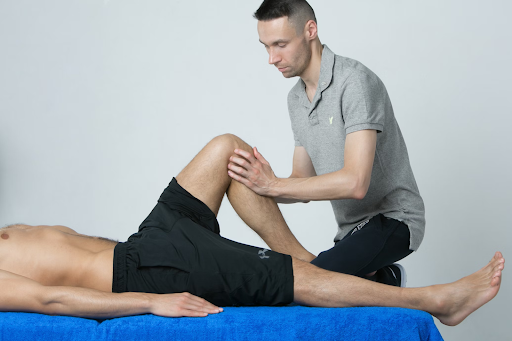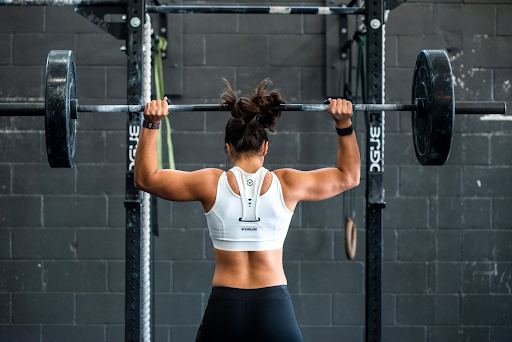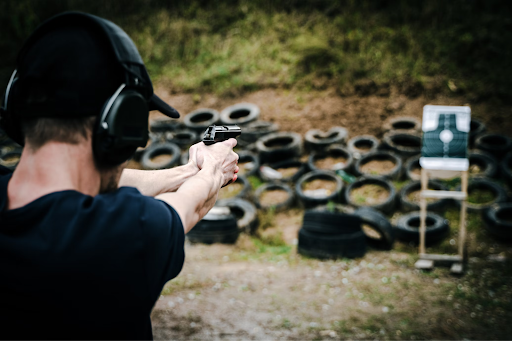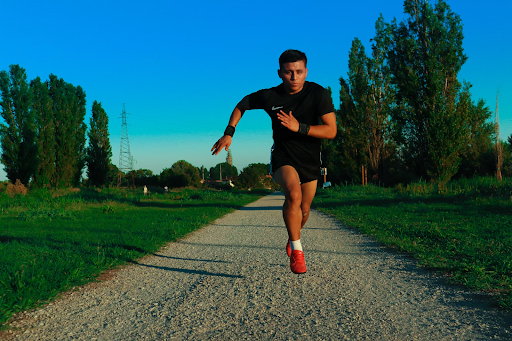In modern sports, the role of recovery fitness and specialized training in modern sports cannot be overstated. These elements are vital for athletes to recover effectively, prevent injuries, and maintain high performance levels. In this article, we’ll delve into how recovery strategies and targeted training programs are transforming athletic performance today.
Athletes must manage body composition carefully, balancing fat loss and muscle gain to enhance performance while addressing both physical and mental well-being.
Recovery is essential for athletic success, with active and passive strategies helping to reduce injury risk and optimize performance through structured recovery programs.
Integrating professional therapy and technology into training regimens supports injury prevention, enhances recovery, and tailors training to meet individual athlete needs.
Understanding Body Composition Changes in Athletes
Athletes constantly strive to optimize their body composition to enhance their performance. The balance between fat loss, muscle gain, and the structure of the skin plays a pivotal role in achieving peak athletic performance. Changes in body composition can significantly impact an athlete’s strength, speed, and endurance. For instance, reducing body fat can lead to improved agility and speed, while increasing muscle mass can enhance power and strength.
However, the path to achieving the ideal composition is not always simple. Many athletes notice changes such as cellulite during weight management. This occurs due to the complex interaction of fat loss, water retention, and skin elasticity. As the fat layer shrinks, cellulite can appear more visible, creating a dimpled look on the skin’s surface. To better understand this common concern, athletes can learn about why you get more cellulite when you lose weight, recognizing that its presence does not necessarily signal poor health or fitness.
Sports medicine plays a crucial role in addressing the balance between body image, health, and performance. Medical professionals guide athletes through the intricate process of body composition management, ensuring that they achieve their performance goals without compromising their health. This holistic approach considers not only physical attributes but also the mental well-being of athletes, helping them maintain a positive body image and overall health.
The focus on body composition goes beyond aesthetics; it is about optimizing physical performance, functional performance, and endurance performance. Understanding how different components of body composition affect performance allows athletes to tailor their training and nutrition plans to their specific needs. Endurance athletes might prioritize reducing body fat to boost stamina, while strength athletes may focus on gaining muscle mass to enhance power.
Ultimately, achieving the ideal body composition is a dynamic and ongoing process that requires careful management and support from sports professionals. Addressing both the physical and psychological aspects of body composition helps athletes achieve a balance that supports their performance goals and overall well-being.
The Importance of Recovery in Athletic Performance

Recovery is the unsung hero of athletic performance. It is the recovery period during which the body repairs itself, replenishes energy stores, and prepares for the next bout of physical activity. Active and passive recovery strategies are crucial in this process. Active recovery involves low-intensity exercises that promote blood flow and help clear metabolic waste from the muscles, while passive recovery includes rest and sleep, which are crucial for muscle repair and overall exercise recovery, post exercise recovery, recovery time, and the cool down phase.
Overtraining is a common pitfall that can lead to increased injury rates and a significant decrease in acute performance. When athletes push their bodies beyond their limits without adequate recovery, they risk sustaining injuries that can sideline them for extended periods. This highlights the need to balance intense exercise training with adequate recovery periods and perceived exertion. Professional athletes often work closely with coaches and medical professionals to develop tailored recovery plans that align with their training schedules and performance goals.
Structured recovery programs often incorporate professional therapies, including:
Sports massage: alleviates muscle tension, promotes relaxation, and enhances blood circulation.
Physiotherapy: helps reduce muscle soreness and improve flexibility.
Cold water immersion: employed to accelerate the recovery process and prevent injuries.
These techniques are effective in reducing muscle soreness, improving flexibility, and enhancing overall athletic performance. Sports Massage in Singapore, widely practiced among athletes and fitness enthusiasts, is especially valued for its ability to ease delayed onset muscle soreness, relieve muscle tension, and promote deep relaxation.
Different recovery interventions are tailored to meet the specific needs of athletes. For instance, elite athletes may incorporate contrast water therapy, which involves alternating between hot and cold water immersion to reduce muscle inflammation and promote recovery. Finding the right combination of recovery methods for each athlete ensures peak performance while minimizing injury risk.
Effective recovery strategies enhance performance and contribute to long-term athletic health. Prioritizing recovery helps athletes recover maintain physical and mental well-being, sustaining high performance levels throughout their careers and improving subsequent performance. In the competitive world of sports, a recovery strategy is not just a luxury; it is a necessity that enables athletes to achieve faster recovery and reach their full potential.
Integrating Professional Therapy Into Training Routines
Integrating professional therapy into training routines is a game-changer for athletes. Recovery modalities like:
Deep tissue work
Stretching
Physiotherapy are essential components of a comprehensive training program. These therapies aid in recovery and also play a preventive role, reducing injury risk and enhancing overall performance. For example, deep tissue massages target the deeper layers of muscle tissue, helping to release tension and improve flexibility.
Collaboration among physical therapists, athletic trainers, and strength coaches is crucial for creating effective rehabilitation programs. They work together to assess the athlete’s strengths and weaknesses, tailoring the training approach to meet specific needs. This collaborative effort ensures that the athlete receives comprehensive care that addresses all aspects of their performance and recovery.
Different regions have unique therapy approaches, with Asia known for its emphasis on holistic and preventive care. Techniques such as acupuncture, cupping, and traditional massages are widely practiced and have been integrated into modern sports therapy. These methods not only promote physical healing but also enhance mental well-being, providing a well-rounded approach to athlete care.
Massage therapy serves as both treatment and preventive measure, helping athletes maintain peak performance. Regular massages can identify potential issues before they become serious injuries, allowing proactive addressing. This preventive approach is particularly important for professional athletes who are constantly pushing their bodies to the limit.
Physiotherapy significantly aids recovery by addressing specific injuries and providing targeted treatment plans. Key methods include:
Manual therapy
Electrotherapy
Therapeutic exercises These promote healing and restore function. Physiotherapists develop individualized treatment plans with athletes to support recovery and enhance performance.
Incorporating these professional therapies into training routines ensures that athletes receive the care and support they need to perform at their best. Addressing both physical and mental aspects of recovery, these therapies contribute to athletes’ overall well-being and long-term success.
Specialized Training Across Diverse Sports

Specialized training is crucial for athletes in niche and precision-based sports. Each sport requires a unique set of skills, and training programs must be tailored to meet these specific demands. Engaging in multiple sports through specialized training helps athletes develop a broad range of skills, including:
Strength
Agility
Coordination
Endurance
This diverse training stimulus approach enhances overall athleticism and prevents overuse injuries by reducing repetitive strain on the same muscle groups.
Cross-training in various sports fosters mental resilience by equipping athletes with problem-solving skills to handle diverse challenges. Benefits include:
Developing different muscle groups and enhancing cardiovascular fitness, as seen in athletes participating in both swimming and running, which improves overall performance benefits.
Exposure to different sports helps athletes develop sports-specific skills and game sense.
Making athletes versatile and adaptable.
A comprehensive actual training regimen with various physical and technical aspects helps athletes avoid over-specialization. Over-specialization can lead to burnout and increased injury risk from overworking the same muscle groups and joints. Incorporating various training activities into the training process helps athletes achieve balanced development, supporting long-term performance and health.
Strength and stability are critical in specialized training, especially for sports requiring precise movements and control. In shooting sports, athletes must maintain a steady posture and focus on their target. Stability training exercises like balance drills and core strengthening improve an athlete’s ability to maintain control and precision during competition.
Injury prevention is a key aspect of specialized exercise training. Incorporating exercises targeting specific muscle groups and movements helps athletes reduce injury risk and enhance performance during an exercise session. This proactive approach ensures athletes are well-prepared to handle their sport’s physical demands, allowing them to compete at their highest level in exercise performance.
Case Study of Precision and Stability in Target Sports

Shooting sports, such as those involving air pistols, require a high degree of precision and stability. The biomechanics of shooting involve:
Maintaining a steady posture
Controlling breathing
Executing precise movements Consistent practice of these skills is necessary to achieve the accuracy required in competition.
Balance and coordination are crucial for success in target sports. Athletes must be able to maintain their stance and control their movements to ensure that their shots are accurate. Stability training exercises like balance drills and core strengthening help athletes develop the skills needed to maintain control and precision during competition.
Stability training plays a significant role in injury prevention. By strengthening the core and improving balance, athletes can reduce the risk of injuries caused by instability or poor posture. This is particularly important in sports requiring repetitive movements, as it minimizes strain on the body and prevents overuse injuries.
Incorporating these training techniques into routines helps athletes improve performance and maintain health, leading to improved performance. Focusing on precision and stability helps athletes in target sports achieve the accuracy and control needed to excel in competitions.
Nutrition as a Core Element of Recovery

Nutrition is a cornerstone of the recovery process for athletes. Proper intake of macronutrients—proteins, carbohydrates, and fats—repairs muscle tissue, replenishes energy stores, and promotes overall recovery:
Proteins: Crucial for muscle protein synthesis, repairing and building muscle fibers damaged during intense training sessions.
Carbohydrates: Restore muscle glycogen, the primary energy source during exercise.
Healthy fats: Support hormone production and overall cellular function.
Hydration is another critical component of nutrition. Adequate hydration ensures optimal blood flow, nutrient delivery, and body temperature regulation. Dehydration impairs physical and cognitive performance, making it crucial for athletes to stay hydrated before, during, and after exercise. Vitamins and minerals also play a vital role in supporting recovery by aiding in energy production, immune function, and reducing inflammation.
Supplements are often marketed to enhance recovery, but distinguishing between evidence-based options and myths is important. Proven supplements that aid in recovery include:
Protein powders
Creatine
Electrolytes These provide essential nutrients that support muscle repair and hydration. Athletes should be cautious of supplements with exaggerated claims without scientific backing. Consulting with a healthcare professional before incorporating new supplements into a recovery regimen is always advisable.
Popular recovery strategies often include supplements, but relying on scientific evidence rather than marketing hype is essential. For example, while some athletes may use detox supplements believing they expedite recovery, limited evidence supports these claims. Instead, focusing on a balanced diet rich in whole foods, adequate hydration, and proven supplements supports effective recovery.
Successful recovery relies on a holistic approach combining proper nutrition, hydration, and evidence-based supplements. Prioritizing these elements helps athletes enhance their improved recovery process, improve performance, and improve recovery health for short term recovery and long term recovery.
Evaluating Supplement Use in Sports
The use of supplements in sports is a topic of great interest and debate. Evidence-based discussion of supplements is crucial for athletes aiming to enhance recovery and performance. Proven aids like protein, creatine, and electrolytes support muscle repair, energy replenishment, and hydration, respectively. These supplements are widely used by athletes to aid in recovery and improve overall performance.
In contrast, some supplements have less scientific support. While protein and creatine have extensive research backing their efficacy, some amino acids or herbal extracts may lack the same level of evidence. Athletes should rely on thoroughly researched and proven effective supplements.
Detox supplements often come into question when evaluating recovery claims. Marketed with promises of removing toxins and enhancing recovery, these supplements lack substantial scientific evidence. Athletes should be wary of such products and focus on rigorously validated supplements.
The goal is to enhance performance and recovery through safe and effective means to enhance acute performance. Relying on evidence-based supplements and avoiding those with dubious claims ensures athletes support their bodies optimally.
Tools and Technology for Athlete Development
Technology has revolutionized athlete development, offering tools that enhance training efficiency, track progress, and prevent injuries. Wearable technology like GPS tracking devices and heart rate monitors allows real-time monitoring of performance metrics during training sessions. These devices provide valuable data on an athlete’s speed, distance covered, and heart rate, helping coaches tailor training programs to individual needs.
Artificial intelligence (AI) is increasingly used to:
Analyze player movements and improve training programs.
Identify patterns and provide insights that help athletes optimize performance.
Pinpoint areas where an athlete may be at risk of injury, allowing proactive adjustments to their training regimen.
Virtual reality (VR) is another innovative tool being utilized in sports training. VR creates immersive environments where athletes can practice skills without physical strain. This technology is particularly useful for sports that require precise movements and coordination, as it allows athletes to hone their skills in a controlled setting.
Functional training tools, such as the VertiMax, are designed to improve strength and skill integration. These tools focus on movements that are relevant to specific sports, helping athletes develop the physical attributes needed for peak performance. For example, the VertiMax can be used to enhance explosive power and agility, which are crucial for sports like basketball and football.
Data analytics play a significant role in athlete development by offering insights into performance that help tailor training to individual needs. For instance, swing analysis for baseball players can provide detailed feedback on their technique, allowing for targeted improvements. By leveraging these advanced tools and technologies, athletes can achieve greater efficiency in their training and enhance their overall performance.
Choosing the Right Equipment for Safe and Effective Training
Choosing the right equipment is essential for safe and effective training. Proper training equipment supports athlete health and helps prevent injuries, allowing athletes to train with confidence. For example, using appropriate footwear can reduce the risk of foot and ankle injuries, while well-designed fitness equipment can support proper form and technique.
There is a wide range of training equipment available, from minimal setups to advanced tools. Minimal setups, such as resistance bands and bodyweight exercises, can be highly effective for strength and conditioning. These tools are versatile and can be used for a variety of exercises, making them a valuable addition to any resistance training program.
Advanced tools, such as weightlifting machines and specialized training equipment, offer additional benefits for performance enhancement. These tools allow for more targeted and controlled exercises, helping athletes develop specific muscle groups and improve their overall strength. For example, a leg press machine can help athletes build lower body strength in a controlled and safe manner.
When selecting training equipment, it is important to consider the specific needs of the athlete and the demands of their sport. For instance, a runner may benefit from using a treadmill with advanced features, while a basketball player might focus on equipment that enhances their agility and explosive power. By choosing the right equipment, athletes can ensure that their training is both safe and effective.
Bringing It All Together for Long-Term Athletic Health
Achieving long-term athletic health requires a holistic approach that integrates:
Body composition management
Recovery
Therapy
Nutrition
Training tools
Each of these elements plays a crucial role in supporting an athlete’s performance and overall well-being. Sustainable recovery practices, such as active recovery and adequate sleep, are essential for maintaining both physical and mental health.
A balanced diet rich in whole foods and hydration is crucial for supporting long-term health and performance. Proper nutrition replenishes energy stores and supports muscle repair after training. By focusing on a diet that includes a variety of nutrients, athletes can ensure that they are providing their bodies with the necessary fuel for optimal performance.
Listening to the body for signs of fatigue or discomfort is important to avoid injuries and ensure a sustainable athletic career. Integrating rest days into training schedules can prevent overtraining and support long-term athletic performance. By recognizing the importance of rest and recovery, athletes can maintain healthy performance levels and reduce the risk of injuries.
Summary
In summary, the integration of recovery fitness and specialized training is essential for achieving peak athletic performance and maintaining long-term health. By understanding the impact of body composition changes, prioritizing recovery, and utilizing professional therapies, athletes can optimize their performance and reduce the risk of injuries. Nutrition plays a vital role in the recovery process, and evidence-based supplements can provide additional support.
Frequently Asked Questions
Why is recovery important for athletic performance?
Recovery is essential for athletic performance as it facilitates bodily repair, energy replenishment, and injury risk reduction, leading to improved outcomes in training and competition. Prioritizing recovery can significantly enhance your overall performance.
What are the best recovery techniques for athletes?
The best recovery techniques for athletes include active recovery, ensuring proper sleep, maintaining good nutrition, and utilizing professional therapies like massage and physiotherapy. Implementing these strategies can significantly enhance recovery and overall performance.
How does body composition impact sports performance?
Body composition plays a crucial role in sports performance, as improvements in fat loss and muscle gain can enhance strength, agility, and overall athletic capabilities. Focusing on optimizing body composition can lead to more effective training outcomes and improved performance on the field.
Are supplements necessary for recovery?
Supplements are not strictly necessary for recovery, but options like protein, creatine, and electrolytes can enhance the process. It's crucial to choose evidence-based supplements to support your recovery effectively.
How does technology improve athlete development?
Technology significantly improves athlete development by optimizing training efficiency, enabling precise progress tracking, and reducing injury risks through wearables and data analytics.

